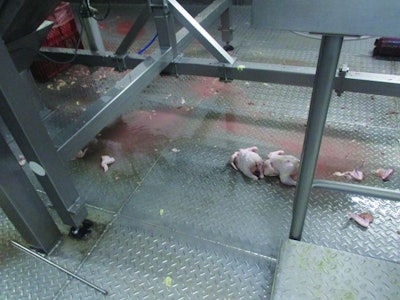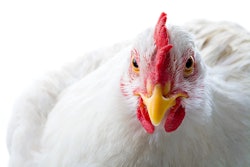
When processing plants are poorly designed or unsafe, or working methods outdated, it is not simply workers who suffer. Poorly designed work areas will result in staff tiring more quickly and their output declining, making the processing plant less efficient. Should an accident occur, the situation could be far worse.
By their very nature, processing plants will have residues on floors or adhered to machinery, and floors may be greasy or damp, presenting a risk for workers. They may also be poorly laid out, with narrow stairways or overhead walkways that lack adequate handrails or may be too close to cutting equipment.
To help protect workers, many companies have set up an industrial and occupational safety department, but all too often the staff from this department are absent from the plant floor and fail to see the daily operations in what should be their area of priority. To overcome this, many companies have installed cameras, but these rarely capture the full picture.
It is worth thinking about what can happen should a worker be injured. Firstly, the worker may be incapacitated, in either the short or long term. A replacement worker will need to be found, and they may not have the same level of skill or experience as the worker being replaced. This can affect the efficiency of the whole team. A company’s reputation may also be harmed.
Additionally, the company will probably need to launch an investigation to identify the causes of the accident and to take remedial action. How thorough this investigation is will influence whether accidents happen in the future.
There are, however, a number of areas where simple changes could help to reduce worker fatigue, reduce risk and lead to more efficient operations.
Simplicity at preslaughter
Some companies weigh cages prior to loading them onto trucks. To do this, stacks of four or five cages are taken to the weighing station, located outside the poultry house and usually close to the trucks.
They are placed onto the weighing scale, taken off the scales and then raised, two or three at a time, onto the truck. Within the truck, two groups of workers create and position stacks of five or six cages until the load is complete. This could, however, be done in a much simpler way, reducing worker fatigue, and allowing the truck to depart to the plant more quickly.
The weigh scales should be located next to, and at the same height as, the truck platform. Once the weight of the stack has been recorded, it can simply be moved off of the scale. Workers in the truck can, using carts, easily deliver the stacks of cages to their place within the truck.
At the processing plant
Overhead conveyors to move the clean, empty plastic crates into which are placed whole birds or parts, individually packed or in bulk, have been used for decades. The system works well. In addition to transporting the crates efficiently, the system frees up space and facilitates supervision.
A similar system could be installed to move the filled crates to where they will be placed onto pallets or stacked and then transported on trucks. The weight of each crate could be recorded, as already happens with birds coming out of the chiller.
Adopting this system would reduce bottlenecks in crates waiting to be weighed individually and later sent to cold rooms. The staff members employed to move the crates could be redeployed.

Fallen parts
Chicken parts will inevitably fall to the floor and, too often, are only picked up during breaks. This can favor bacterial growth and weight loss. Using flexible trash pickers, rather than bending to pick them up, would make their retrieval easier and help to prevent shoulder injuries from having to remove items from hard-to-reach areas.
Making packing easier
Bagged chickens are usually transported by conveyor belt to a team that places them, one by one, into containers. When bottlenecks occur in this process, the pressure that occurs between the waiting carcasses can result in water loss, affecting yield. Bottlenecks can also result in employees having to work extra hours.
It might be possible to take an idea from the egg industry, vertically placing chickens directly into interchangeable modules. Once the modules arrive at a platform, they open in an ordered manner, depositing carcasses into a basket below that is then transported for unloading. Once empty, the modules return to the bagging area.
How to improve pre-slaughter in broiler processing















